I’ve never met Señora Rosenda, the master empanadera of my last post, nor eaten her empanadas, but she’s the stuff of legend in her corner of Santiago del Estero, on the northern steppes of Argentina. I heard about her from my daughter, Celina, who went to stay with the campesina one recent winter in the scrubby northern flatlands, called the mato, which were once in the shadow of the Incas. When I asked Celina what went into Señora Rosenda’s empanadas, she didn’t know. Instead, she told me this story.
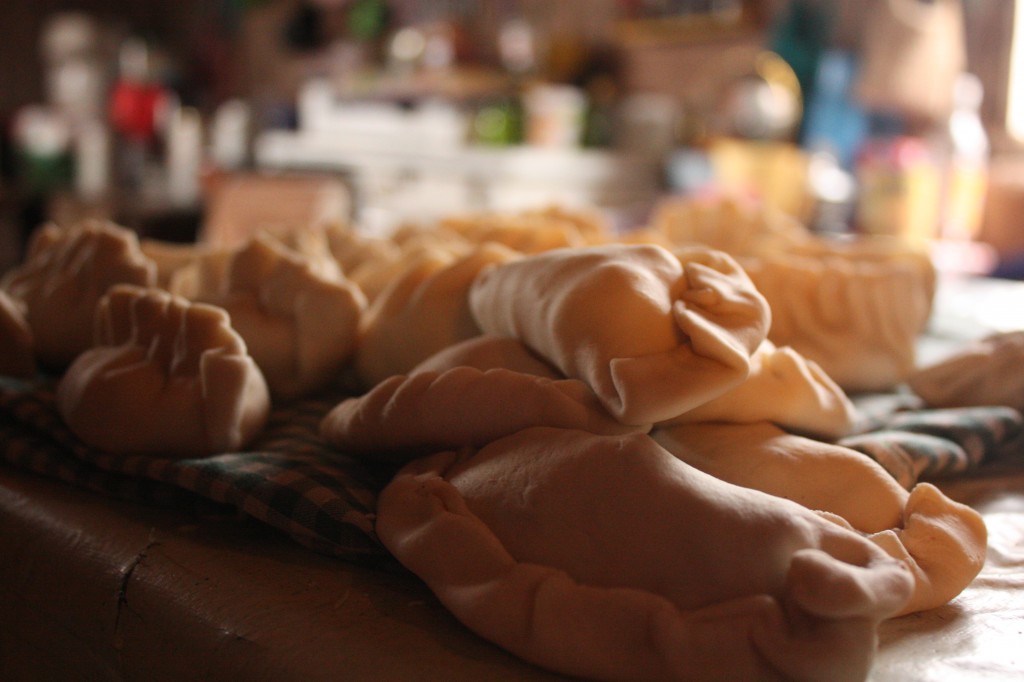
The dough is made from flour and lard and the pockets filled with what meat or vegetables are at hand. These were baked, some were fried. Celina loved them. Photo: Celina della Croce
Today, this corner of the world is in the shadows of a different kind of empire, The Republic of Soy, a term coined by opponents of a global conglomerate that sows lucrative GM soy crops around the world. “Growing pools,” or international financial speculators have rushed to buy or lease land from the campesinos and indigenous populations who can’t afford the lucrative GM monocrop’s production costs, or reject its threat to their way of life. The Republic of Soy’s primary crop is not food but money, made possible by a law passed by President Carlos Menem in 1996 that legalized the commercial cultivation of bioengineered soybeans. Until then, farmers produced food and livestock for consumption, so much of it, that Argentina was considered one of the best-fed countries in the world. Now, genetically modified soybeans carpet half the country’s farmland. No wonder that so much of the produce I found in the Buenos Aires markets wasn’t grown in Argentina (though, according to MoCase-VC, 70%-80% of all the food consumed locally in Argentina is produced by campesinos).
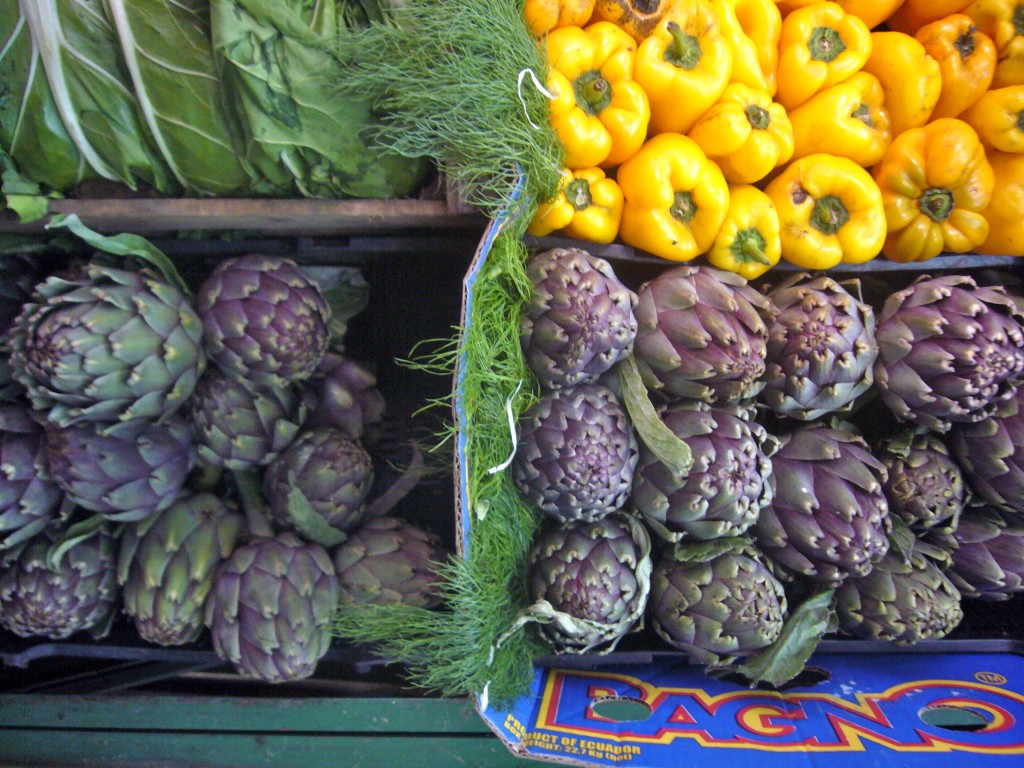
The produce stalls and supermarkets that I shopped in while in Buenos Aires offered a uniformity of fruits and vegetables, mostly imported. These were from Ecuador. Photo: Nathan Hoyt
Celina, who studies in Latin America, wanted to see for herself what the expansion of agribusiness had done to small farmers here, as elsewhere in the world. She wrote, “The family’s lifestyle is a mix of modern-day and early 20th century life. They get up at daybreak and go to bed at sunset to make full use of the daylight. No refrigeration, only a lightbulb and a radio… If they had meat, they hung it from a ceiling beam.” The nearest internet was more than an hour away and more a source of jokes than a tool. “Where did this gringa come from?” they asked. ‘The internet, they teased, as though I’d materialized from thin air.”
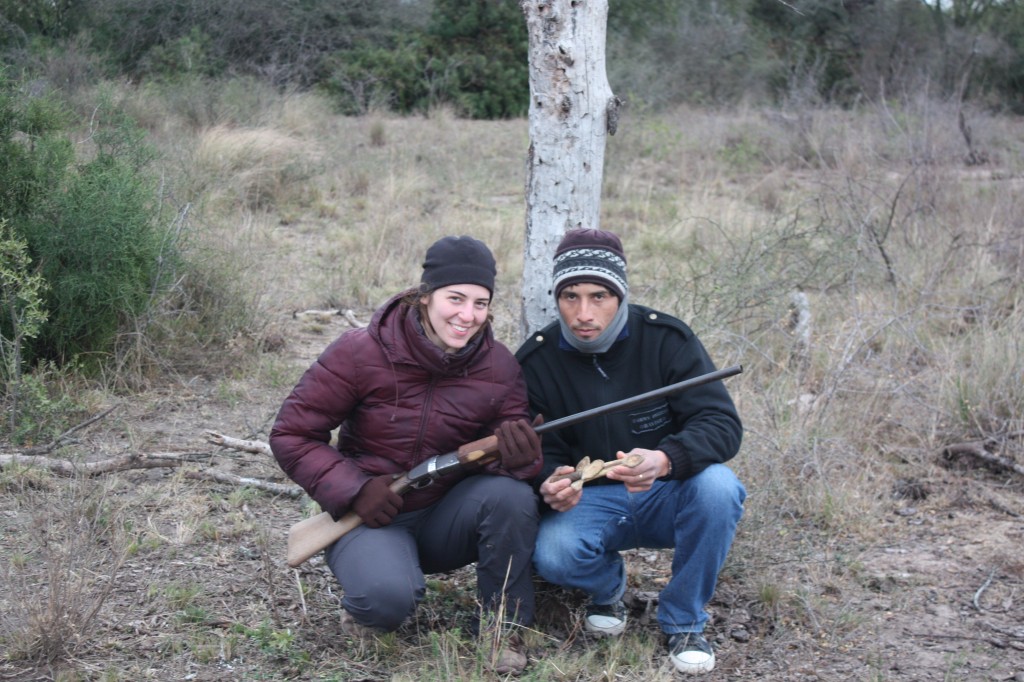
A shooting lesson with Señora Rosenda’s son, José, in the mato. Small game and wild fowl are part of the family diet.
Her sponsor was the National Peasant Movement of Santiago del Estero—Farmers’ Way, also known as MoCaSe-VC, an organization that fights for the Señora Rosendas of the world—peasants and indigenous people—to keep and regain their lands and to defend their right to grow and consume their own food. Equally important, it sends city dwellers and foreigners like Celina to live with the campesinos for a transfer of knowledge. Celina was charged with bringing a sack filled with vegetables and provisions for her stay. Señora Rosenda made swift use of the flour, carrots, and potatoes for empanadas and rib-sticking soups. “They are so generous,” Celina wrote, “though they have so little.”
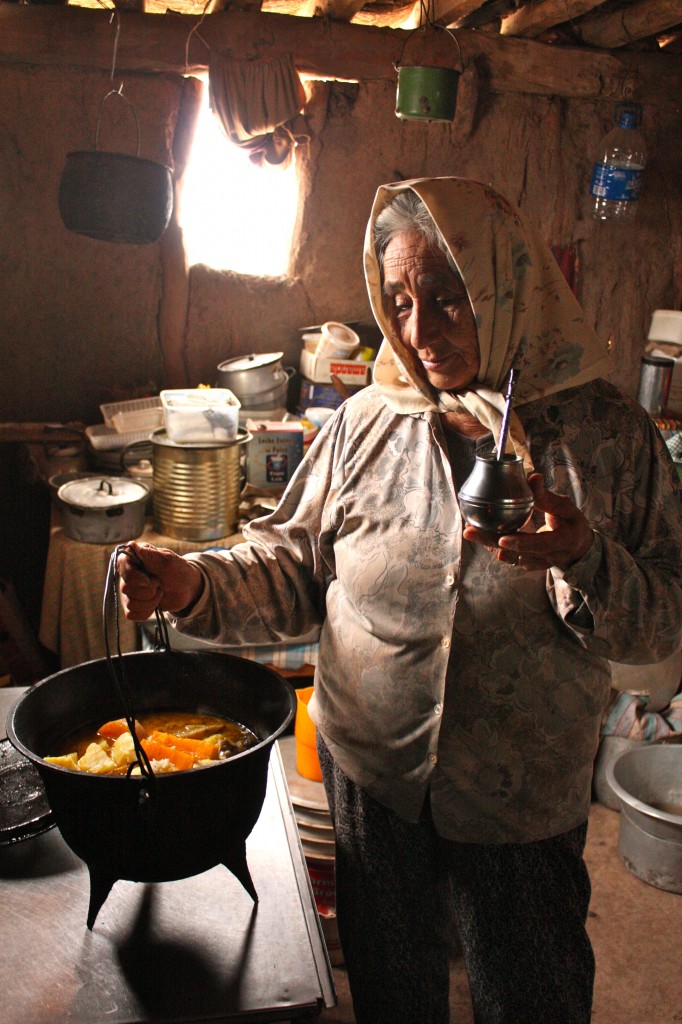
Señora Rosenda drinking yerba mate while making vegetable and chicken soup with Celina’s provisions and a chicken from the farmyard. Photo: Celina della Croce
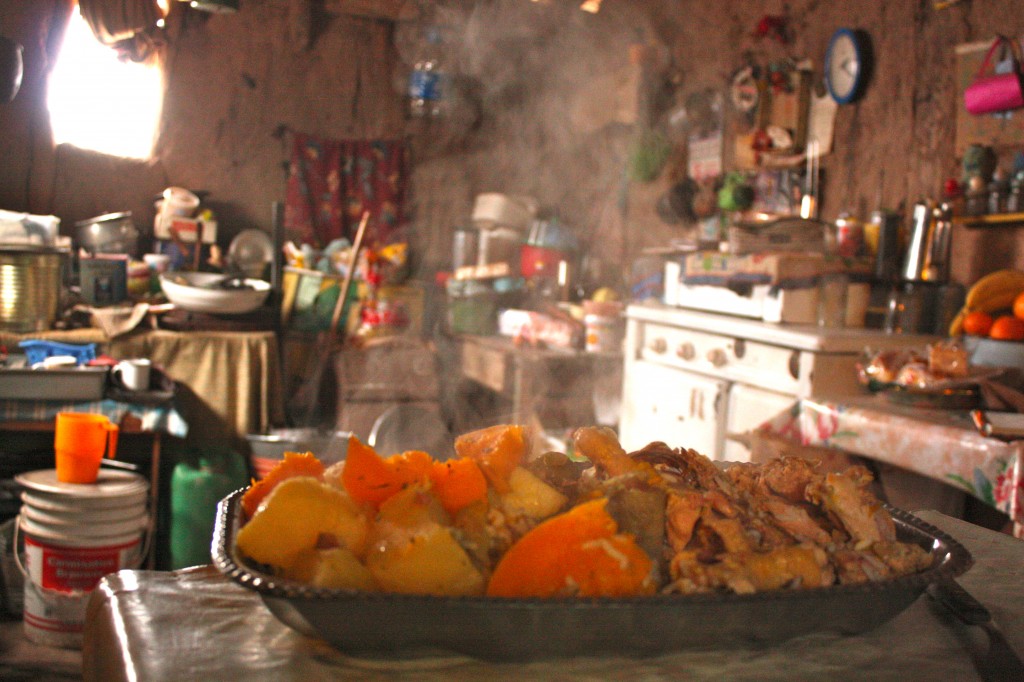
The stew Señora Rosenda concocted with the gifts from the “gringa.” Celina’s face lights up at the thought of it. Photo: Celina della Croce
There can be no mention of Señora Rosenda’s empanadas without contemplating her world. Recipes are not about ingredients alone. They tell stories. Señora Rosenda grew up on this land, as did her ancestors. Long ago, they carved out a plot large enough to feed themselves and their animals. But for centuries of campesinos who worked the land, formal deeds went unwritten.
The mato is no longer forsaken territory. The flatlands have become a province of the Republic of Soy, a hungry empire that devours the globe. Considering it up for grabs, the soy barons write themselves deeds to land that the peasants have cultivated for generations. Like the early Europeans who occupied the ancestral lands of the native Americans, the soy barons have overrun the mato, and forced out the small farmers by whatever means necessary. The campesinos say they risk their lives at the hands of paramilitary forces and hired guns who shoot them, drive large trucks into their tents, burn their crops, destroy their machines, kill their animals, and drop poison on their houses from airplanes.
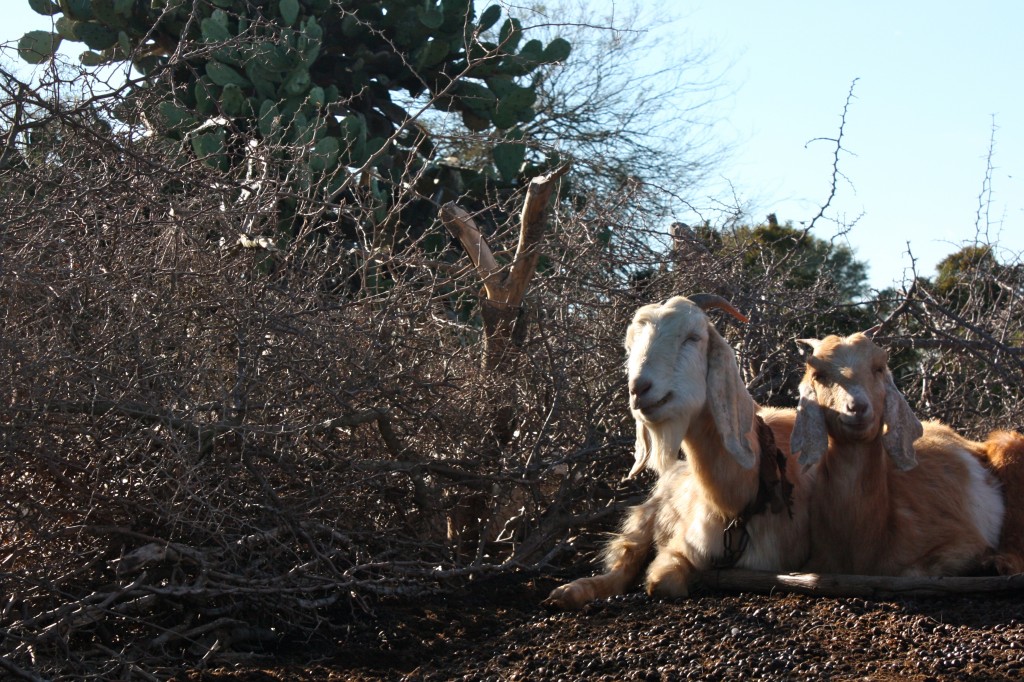
Small goat farming, suited to the arid and rocky landscape of Santiago del Estero and one of the few sources of modest income for the family, is disappearing with the end of peasant farming. Photo: Celina della Croce
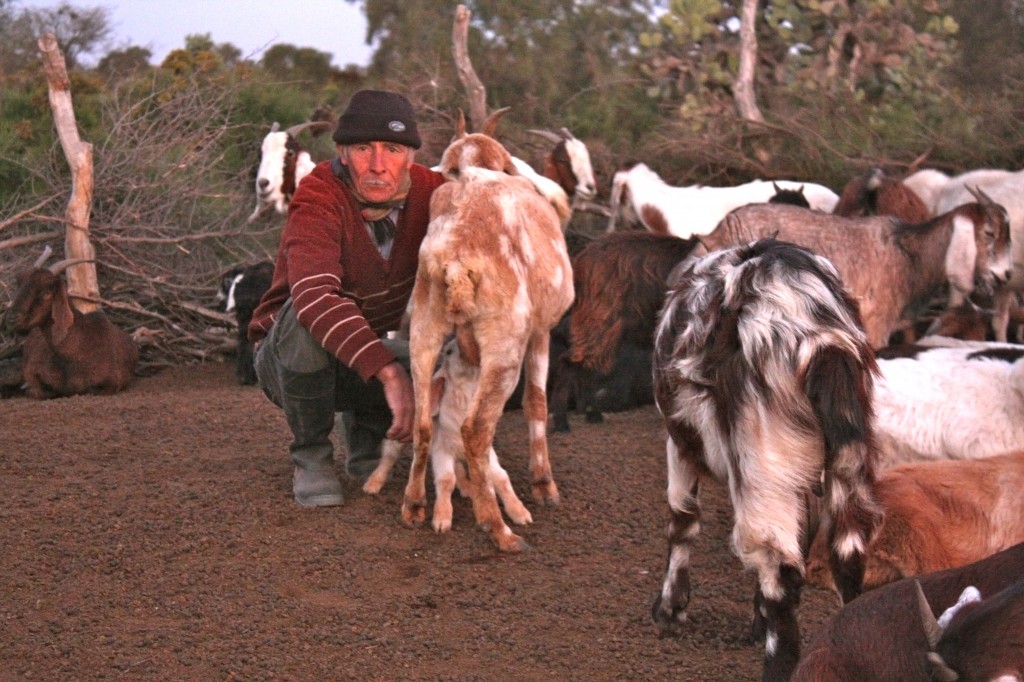
Señora Rosenda’s husband, Gualberto, with his flock of goats. A mother and baby get special attention. Photo: Celina della Croce
If agribusiness has its way, Argentina will become a land without farmers. The Republic of Soy, reshaped by herbicides and technology, requires a minimal workforce. A thousand hectares of soy can be managed by only four people. In ten years, some 200,000 campesinos were driven from their lands and fled to the slums of the cities. Brewster Kneen, who wrote about the end of farming in Argentina in Farmageddon over a decade ago, put it this way: “One does not want to wonder how many of the ubiquitous garbage pickers on the streets of Buenos Aires were once small farmers.” Where there were once vegetables, fruits, lentils, meat, cheese, and milk that people could eat, now there is soy. 97% of it is sold to China, the United States, and Europe, much of it to feed the cattle for our hamburgers—a bitter harvest for the Argentines. The soy barons have destroyed small-scale, sustainable farming communities while the multinational plantation companies have degraded its soil and uprooted 70 per cent of the forests to plant transgenic crops that sicken and pollute.
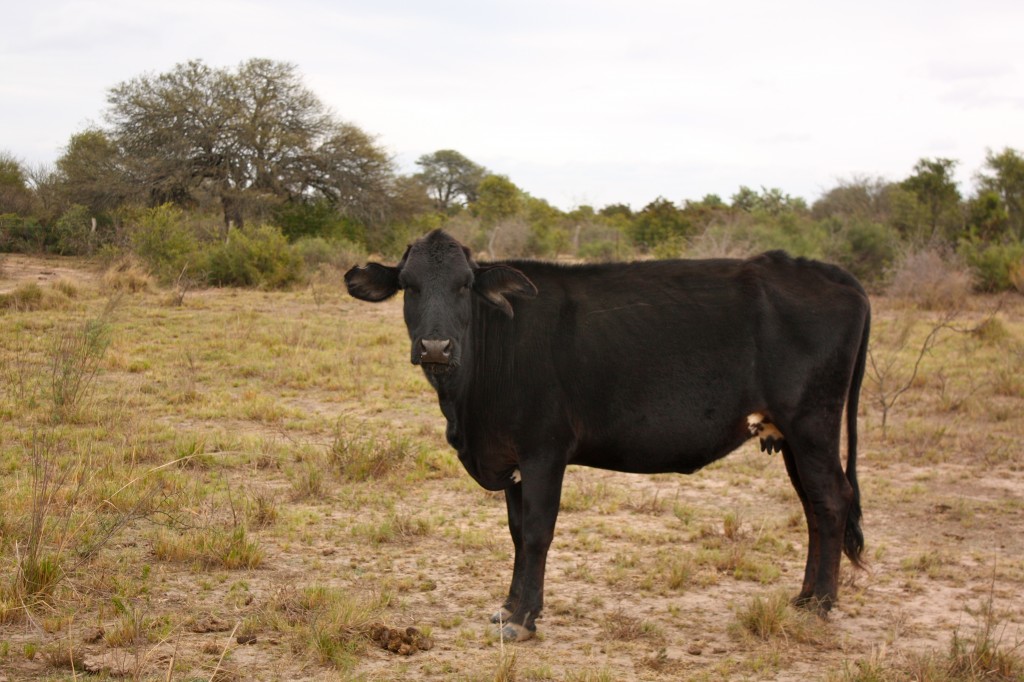
Señora Rosenda’s cow grazing on the mato as if to say, “What’s happened to us?” Most grazing land has been transformed into soy bean fields. Photo: Celina della Croce
Agents for the barons informed Señora Rosenda’s family that they intended to divide up her land, allowing them to keep a small fraction of the original plot and paying an undervalued price for the rest of the property. But the family needs the whole plot to raise their horses, cattle, goats, sheep, and chickens; grow corn, alfalfa, and vegetables for their own food and the animals’ feed; to have enough firewood for the cold winters on the flatlands. Like other peasant farmers, they are attached to their ancestral land and can live dignified lives through working it. They see the city as dangerous, overwhelming, polluted, and unhealthy. Based on the fate of other campesinos in the mato who had acquiesced to such deals with the soy barons, Señora Rosenda refused. Soon after, some of her animals were found dead, and the family was shot at when they ventured out of their home. They still suffer from air and water pollution from Monsanto’s Roundup herbicides as airplanes pass over their land to fumigate the area.
It is not hard to see that in these parts, Señora Rosenda is like a David to Goliath. With the power of the international campesino movement behind her, she has fought the soy barons and succeeded, so far, in keeping her land, crops, and animals. She lives on her farm with her husband, Gualberto, and one of her grown children, raising goats and chickens for meat and eggs. Her family slaughters the goats and sells most of the meat to a butcher in a tiny town not far away. Like other campesinos in the mato, she was once afraid of leaving her house. Now she has a deed to her ancestral lands, though her Goliath is not slain. The corporate Goliaths have many lives.
“Let us have the candor to acknowledge that what we call “the economy” or “the free market” is less and less distinguishable from warfare. For about half of the last century, we worried about world conquest by international communism. Now with less worry (so far) we are witnessing world conquest by international capitalism. Though its political means are milder (so far) than those of communism, this newly internationalized capitalism may prove even more destructive of human cultures and communities, of freedom, and of nature. Its tendency is just as much toward total dominance and control.”
–Wendell Berry, in “The Failure of War”
Click here to tell me what you think.
Here, my own empanadas… originating with my maternal grandmother and namesake, Giulia Esu. While they may sound more Spanish than Italian, these impanadas are a legacy of Alghero, the ancient Spanish-built port on the island of Sardinia, where my mother was born.
Nonna Giulia’s “Impanadas” with Lamb and Artichoke Stuffing
Makes about 18 empanadas
Adapted from Italian Home Cooking: 125 Recipes to Comfort Your Soul, by Julia della Croce. Published by Kyle Books (U.S.) and Kyle Cathie (U.K), 2010.
First, double your favorite pie crust recipe that would yield a total of two double crusts if you were making standard 8-inch pies, omitting any sugar. My grandmother used lard for the pastry. My favorite substitutes goose fat, when I can get it, for butter. But usually I use a formula of 3 cups of flour, a total of 20 tablespoons or 2-1/2 sticks shortening (I prefer a mixture of 1/4- part cold vegetable shortening and 3/4-part unsalted butter), and 8-10 tablespoons ice-cold water. Don’t leave out the salt–1 teaspoon.
For the filling:
1¼ pounds lean ground lamb
2 tablespoons extra-virgin olive oil
1 medium onion, chopped
2 large cloves garlic, minced
1 cup roughly chopped cooked fresh or frozen (not pickled) artichoke hearts
4 ounces stale bread
½ cup meat stock or milk, for soaking bread
4 tablespoons chopped fresh flat-leaf parsley
1/3 cup freshly grated pecorino, Parmigiano-Reggiano, or Grana Padano cheese
2 large egg yolks (reserve egg whites)
¾ teaspoon salt
¼ teaspoon freshly milled black or white pepper
1 tablespoon chopped fresh rosemary, or 1½ teaspoons dried rosemary
1 whole egg beaten with 1 teaspoon water
1. Make the pastry and chill.
2. In a skillet, warm the oil. Add the onion, garlic, and artichokes and sauté over medium heat until the onion is wilted, 3 to 4 minutes. Add the meat and sauté gently until lightly browned on the surface and bright pink inside, about 2 minutes. Transfer the mixture to a medium bowl.
3. Trim the crusts off the bread. Place it in a bowl and pour in enough stock, milk or water to cover. Soak until softened. Squeeze the bread dry and crumble it; discard the liquid.
4. Add the crumbled bread, parsley, grated cheese, egg yolks, salt, pepper, and rosemary to the meat mixture. Mix well.
5. Preheat an oven to 375ºF. Line 2 baking sheets with parchment paper. On a floured work surface, roll out the dough until just less than ¼-inch thick. Using a 3-inch cookie cutter, stamp out as many rounds as possible from the dough. Transfer to the prepared baking sheets. Gather the scraps together; roll out again and stamp out additional disks. Brush the rounds with the reserved egg whites.
6. Place a generous tablespoon of the filling in the center of each dough disk. Fold the dough over the filling to create a half-moon shaped empanada, lining up the edges. Use a fork to firmly crimp the edges. Use extra dough to make decorations. Brush the surface with the egg wash. Bake until golden, about 30 minutes. Serve warm.

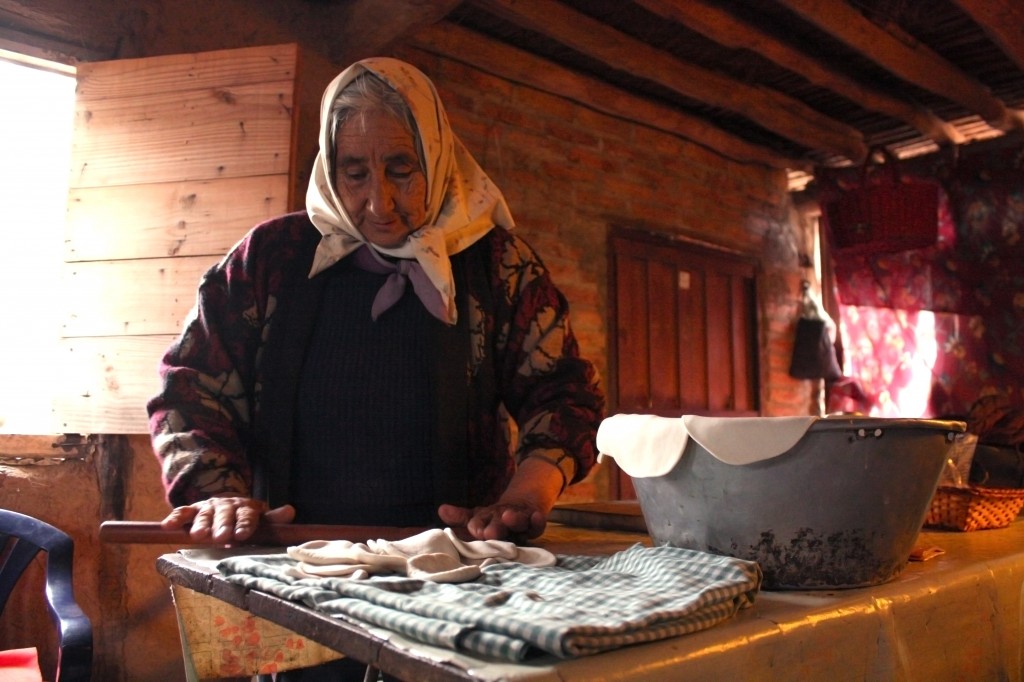
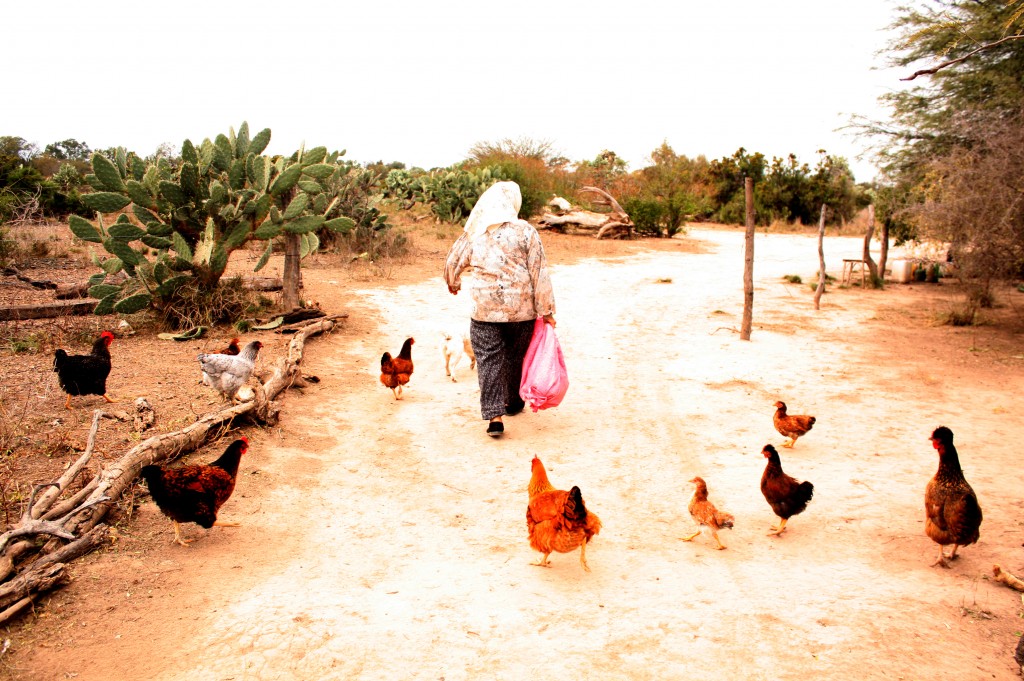
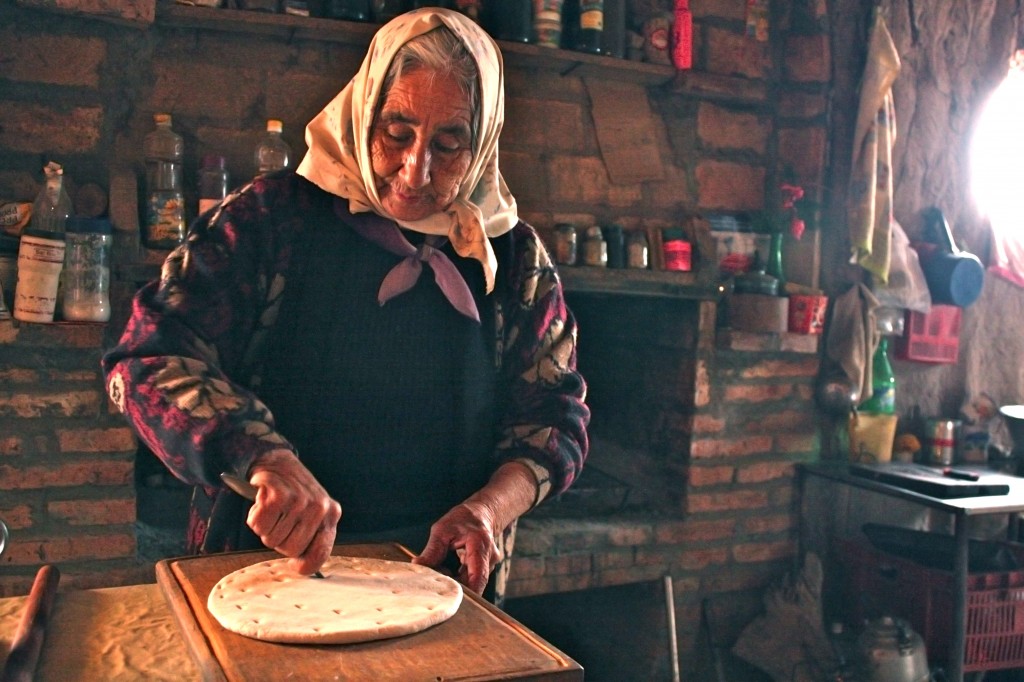
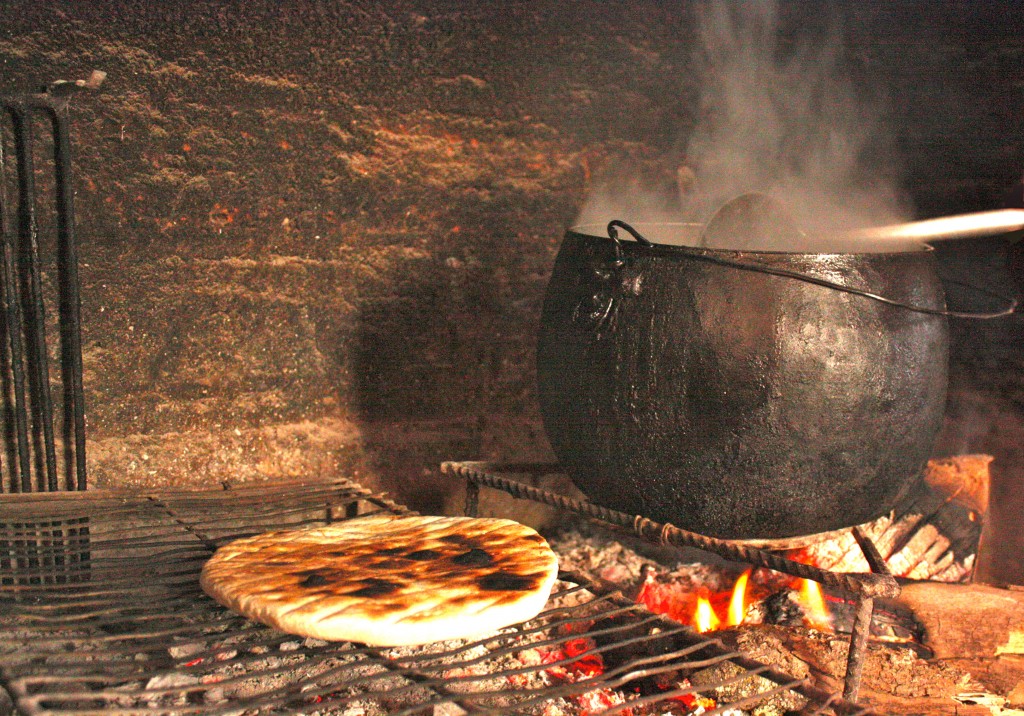
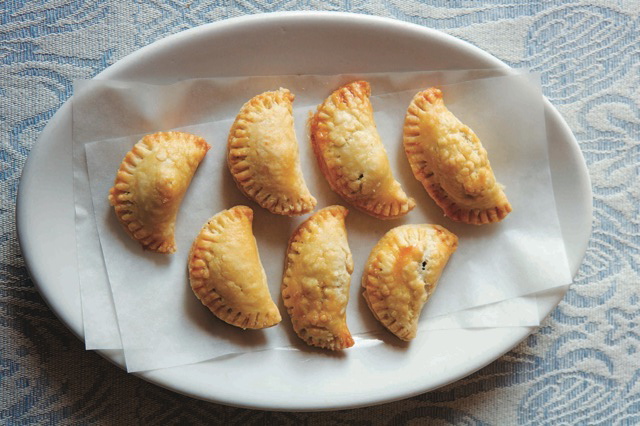
 Follow
Follow
 email
email
What a touching story about the master empanada maker. Thanks for sending it.
I was grateful to have a window into the private world of this family through my daughter. I would like to tell this story to anyone who will listen.
I love this, it is such a great window into cultures and food! I would like to use one of the photos in your article as the basis for a painting. Would that be OK?
Apologies for the delayed reply. Somehow, I didn’t see your comment until just now. About the photos, my daughter, Celina, is the photographer. She lived in the Argentine steppes when she was a student there. It was a very powerful experience for her and she has a great eye. I will tell my daughter about your request and get back to you shortly. I know she is sensitive about respecting the privacy of the people she photographed. You can write to her directly if you like. Contact her on FB via messenger. Her name is Celina Raffaella della Croce. She lives in St. Louis, MO. Let me know if you have any trouble locating her FB page.